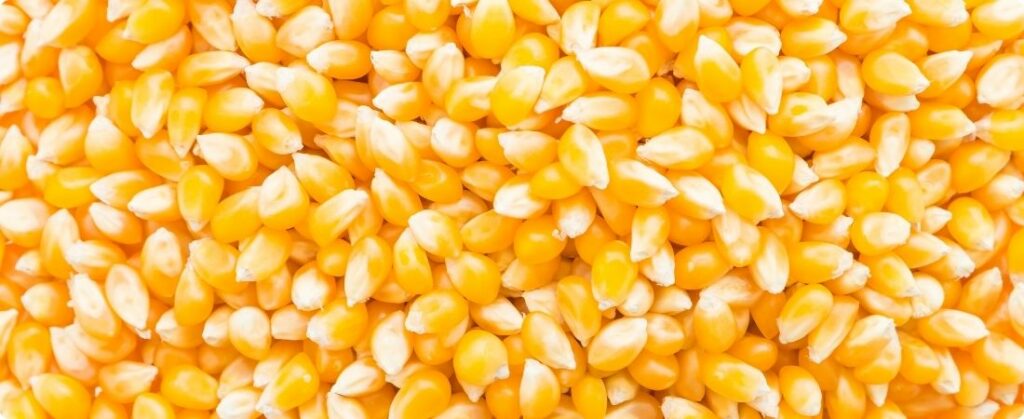
In the 2022/23 season the consumption of corn in Brazil it was 79.601 million tons, which combined with an export of 56 million and an import of 1.5 million, resulted in a transit stock of 5.940 million tons, according to official data from the National Supply Company (Conab ).
In the first report of the special series of Notícias Agrícolas, it is seen that the prospects for 23/24 point to less cereal production in the country, however the internal demand for corn should continue to grow. The latest Conab survey, released this January, estimates consumption of 84.367 million tons of corn in Brazil throughout this cycle.
“In 2023 we had a consumption of close to 81 million tons of corn and we could reach 85 million in 2024”, says Stefan Podsclan, Grain and Project Consultant at Agrifatto.
Animal feed and proteins in 2024
According to data from the National Union of the Animal Feed Industry (Sindirações), the sector consumed 52 million tons of corn in 2023 and is expected to demand 55 million in 2024, an increase of 3 million tons that represents an increase of 5.45% in the need for the cereal .
Despite the projection of less corn in the market, it is not the lack of product that worries the sector, but rather the reflection of this on the industry's costs. “There has been a drop of 11% in production so far, but the accounting shows that there is enough corn to meet feed, ethanol and exports. Speculation is what worries most, as the market anticipates the possible lack of corn. If speculation prevails there will be price adjustments and that is worrying”, comments the CEO of Sindirações, Ariovaldo Zani.
Director of Markets at the Brazilian Animal Protein Association (ABPA), Luis Rua, estimates that corn consumption by the meat poultry, laying poultry and swine sectors is expected to grow by 1 million tons in relation to that used in 2023 and reach 44 million tons in 2024, but does not see a worrying scenario so far.
“There is concern, because corn is a very important input, but I see that 2023 was an atypical year, with a record corn harvest well above previous years. In 2024, based on current projections, we should still have the second largest corn harvest in the history of Brazil”, comments Rua.
If it faces shortages, or a large increase in costs, the sector is already preparing for the possibility of replacing part of the corn used with other products. “Traditionally, corn can be replaced, depending on availability and cost. We are dedicating ourselves to studies of winter cereal production, especially in the South, but in other locations as well”, says Zani.
Corn ethanol
The corn ethanol sector is a demand that has emerged recently and has been increasing its demand year after year. As an example of this constant growth in demand, Coamo Industrial plans to build a new corn ethanol plant in Campo Mourão in Paraná. This plant will have the capacity to produce 258 million liters per year and 180 thousand tons per year of the co-product from DDG processing. Furthermore, the cooperative's estimate is that 20% of all corn received by the company will be used for biofuel production.
In the cycle that ends next March, the National Corn Ethanol Union (Unem) estimates consumption of 14 million tons of the cereal. On the other hand, it projects an increase of 2 million tons for the next season, reaching 16 million tons of corn consumed in the country.
Despite this increase in the need for corn, the sector is not concerned about supply at this time. “We see the reduction in supply more in relation to the last harvest, which was a record production, than an actual drop. The harvest last year was 113 million tons, the last one was 126 million and now we must return to the level of 2022. There is corn to supply all demand chains in the domestic market and there is still an exportable surplus”, says Guilherme Nolasco, President of Unem.
Export in 2024
With a projection of less corn produced and more corn consumed in the domestic market, where will this difference be derived from? Currently, Conab predicts an increase in grain imports to 2.1 million tons and a drop in exports from 56 to 35 million.
“2023 was very good for exports, it was a year of record shipments for both soybeans and corn. The 56 million tons of corn surpassed the previous record by 11 million tons. 2024 will be a year of rest in exports, with a reduction to 15 million tons, returning to 2022 levels, according to Sergio Mendes, Director of Anec.
In Mendes' view, the domestic market is willing to pay to not reduce supply, so it is natural that the reduction comes from exports. Leadership predicts shipments close to 40 million tons in 2024, due to the drop in production.
Brazil's corn exports will fall from 55 to 35-40 million tons due to lower production. This will affect exports, but the feed and ethanol market will remain robust. Furthermore, China has become the main buyer, importing almost 17 million tons in 2023. Despite a possible decline in 2024, the corn ethanol sector remains strong, with demand and production supported by solid margins. Animal protein consumption reduced in 2024, and harvest problems could increase prices.
Pass-through stocks
Conab predicts, by the end of 2024, an increase in stocks from 5,940 to 6,276 million tons, a perspective based on current supply and demand. However, Abramilho's vision differs significantly from these numbers. According to the entity, a reduction in transit stocks is expected at the end of the year. “Transit stock will be very low, certainly the lowest stock in the last five years. We believe that domestic consumption will increase from 80 million tons in 2023 to 84 or 85 million”, says Otávio Canesin, President of Abramilho.
Source: Guilherme Dorigatti | Notícias Agrícolas










